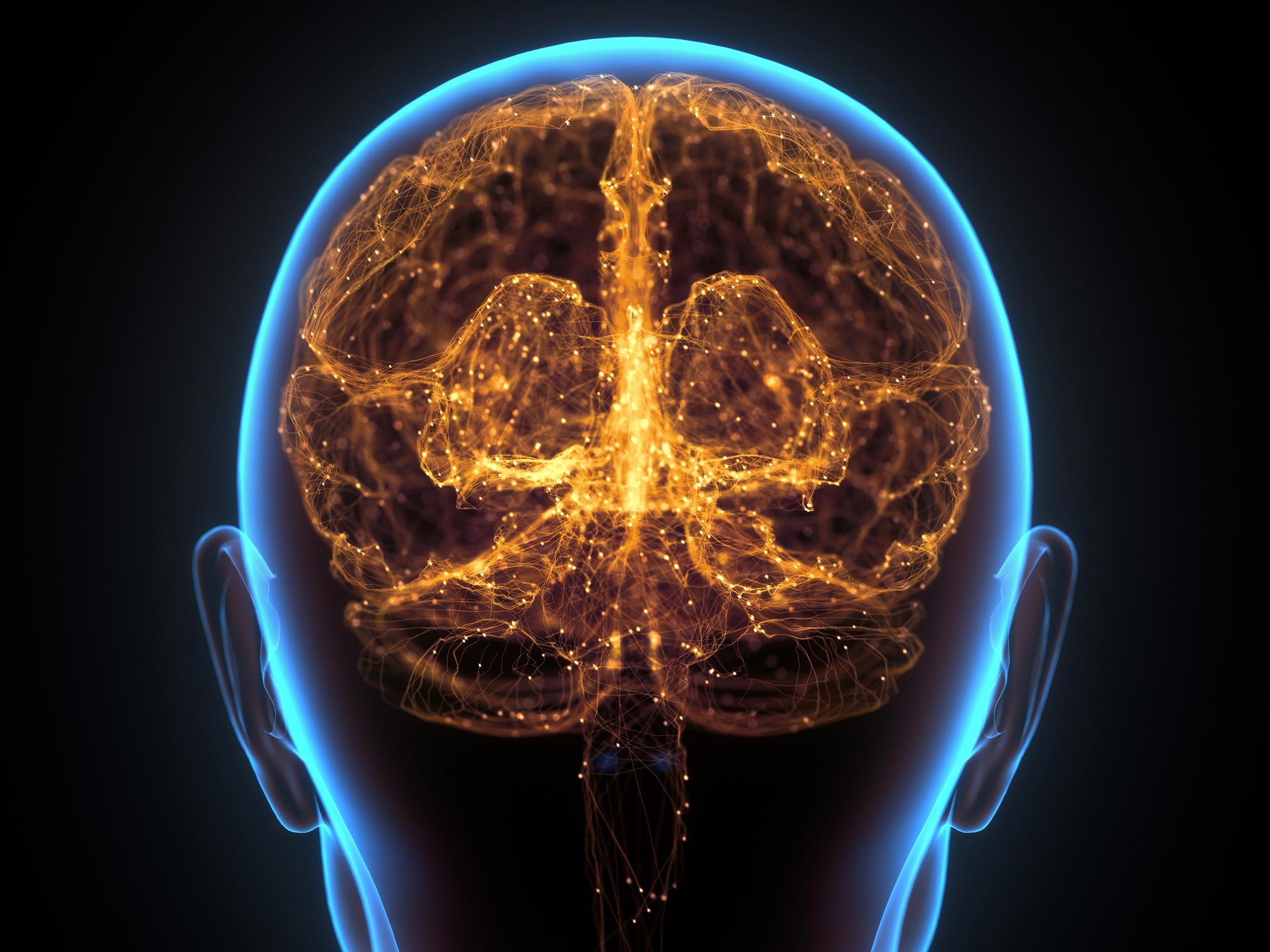

Yeni bir çalışma, sinir ağı aktivitesi tarafından üretilen beyin elektrik alanlarının, ağ kararlılığını ve verimliliğini artırmak için nöronların hücre altı bileşenlerinin fiziksel konfigürasyonunu etkileyebileceğini savunan “hücresel elektrik eşleşmesi” adlı bir hipotez önermektedir. MIT, Londra Şehir Üniversitesi ve Johns Hopkins Üniversitesi’nden bilim adamları tarafından yürütülen araştırma, ritmik elektriksel aktivitenin veya “beyin dalgalarının” sinir ağlarında nasıl koordine olabildiğini ve elektrik alanlarını moleküler düzeyde nasıl etkilediğini gösteren önceki çalışmalara dayanıyor. beyin fonksiyonu ve esnek bilişi kolaylaştırır.
Beyin dalgaları bilgi taşıyıcıları olarak hareket eder. Yakın zamanda önerilen bir “hücre elektroeşleşmesi” hipotezi, bu salınan elektrik alanlarının gelişmiş beyin ağı verimliliğine ve gücüne katkıda bulunduğunu ileri sürer. Bunu, beynin moleküler yapısının fiziksel konfigürasyonunu etkileyerek yaparlar.
Beyin, düşünce dahil çok yönlü işlevlerini yerine getirmek için farklı düzeylerde çalışır. Hedefler veya görselleştirmeler gibi bilgiler, sinir ağları arasındaki senkronize elektriksel aktivite aracılığıyla yakalanır. Aynı zamanda, her bir nöronun içindeki ve etrafındaki bir dizi protein ve diğer biyokimyasallar, bu ağlara katılmak için gerekli mekanizmaları yürütür.
MIT, Londra Şehir Üniversitesi ve Johns Hopkins Üniversitesi’ndeki araştırmacılar tarafından hazırlanan yeni bir makale, yazarların “sitoelektrik” olarak adlandırdıkları bir hipotez olan ağ kararlılığını ve verimliliğini artırmak için ağ elektrik alanlarının nöronların hücre altı bileşenlerinin fiziksel konfigürasyonunu etkilediğini öne sürüyor. bağlama.”

Earl K. Miller, Picquer Öğrenme ve Hafıza Enstitüsü’ndeki son çalışmaları hakkında bir konferans veriyor. Kredi bilgileri: MIT Picower Enstitüsü
Earl K dedi ki: Miller, Michigan Üniversitesi Picower Öğrenme ve Hafıza Enstitüsü’nde Picower Profesörü[{” attribute=””>MIT, who co-authored the paper in Progress in Neurobiology with Associate Professor Dimitris Pinotsis of MIT and City —University of London, and Professor Gene Fridman of Johns Hopkins.
“The brain adapts to a changing world,” Pinotsis said. “Its proteins and molecules change too. They can have electric charges and need to catch up with neurons that process, store, and transmit information using electric signals. Interacting with the neurons’ electric fields seems necessary.”
Thinking in fields
A major focus of Miller’s lab is studying how higher-level cognitive functions such as working memory can rapidly, flexibly, and yet reliably emerge from the activity of millions of individual neurons. Neurons are capable of dynamically forming circuits by creating and removing connections, called synapses, as well as strengthening or weakening those junctions. But, that merely forms a “roadmap” around which information could flow, Miller said.
The specific neural circuits that collectively represent one thought or another, Miller has found, are coordinated by rhythmic activity, more colloquially known as “brain waves” of different frequencies.
Fast “gamma” rhythms help transmit images from our vision (e.g. a muffin), while slower “beta” waves might carry our deeper thoughts about that image, (e.g. “too many calories”). Properly timed, bursts of these waves can carry predictions, enable writing in, holding onto, and reading out information in working memory, Miller’s lab has shown.
They break down when working memory does, too. The lab has reported evidence that the brain might distinctly manipulate rhythms in specific physical locations to further organize neurons for flexible cognition, a concept called “Spatial Computing.”
Other recent work from the lab has shown that while the participation of individual neurons within networks may be fickle and unreliable, the information carried by the networks they are part of is stably represented by the overall electric fields generated by their collective activity.
Cytoelectric coupling
In the new study, the authors combine this model of rhythmic electrical activity coordinating neural networks with other lines of evidence that electrical fields can influence neurons at the molecular level.
Researchers, for example, have studied ephaptic coupling, in which neurons influence each other’s electrical properties via the proximity of their membranes, rather than solely relying on electrochemical exchanges across synapses. This electrical cross-talk can affect neural functions including when and whether they spike to relay electrical signals to other neurons in a circuit.
Miller, Pinotsis, and Fridman also cite research showing other electrical influences on cells and their components including how neural development is guided by fields and that microtubules can be aligned by them.
If the brain carries information in electric fields and those electric fields are capable of configuring neurons and other elements in the brain that form a network, then the brain is likely to use this capability. The brain can use fields to ensure the network does what it is supposed to do, the authors suggest.
To put it (loosely) in couch potato terms, the success of a television network isn’t just its ability to transmit a clear signal to millions of homes. What’s also important is the details as fine as the way each viewer household arranges its TV, sound system, and living room furniture to maximize the experience. Both in this metaphor and in the brain, Miller said, the presence of the network motivates the individual participants to configure their own infrastructure to participate optimally.
“Cytoelectric Coupling connects information at the meso‐ and macroscopic level down to the microscopic level of proteins that are the molecular basis of memory,” the authors wrote in the paper.
The article lays out the logic inspiring Cytoelectic Coupling. “We’re offering a hypothesis that anybody can test,” Miller said.
Reference: “Cytoelectric coupling: Electric fields sculpt neural activity and “tune” the brain’s infrastructure” by Dimitris A. Pinotsis, Gene Fridman and Earl K. Miller, 18 May 2023, Progress in Neurobiology.
DOI: 10.1016/j.pneurobio.2023.102465
The study was funded by the United Kingdom Research and Innovation (UKRI), the U.S. Office of Naval Research, The JPB Foundation, and The Picower Institute for Learning and Memory.

“Analist. Tutkulu zombi gurusu. Twitter uygulayıcısı. İnternet fanatiği. Dost pastırma hayranı.”





More Stories
Bilim insanları dünyadaki en büyük demir cevheri yataklarında milyar yıllık bir sırrı keşfetti
Fosillere göre tarih öncesi deniz ineği, timsah ve köpekbalığı tarafından yenildi
Büyük bir bindirme fayı üzerine yapılan yeni araştırma, bir sonraki büyük depremin yakın olabileceğini gösteriyor